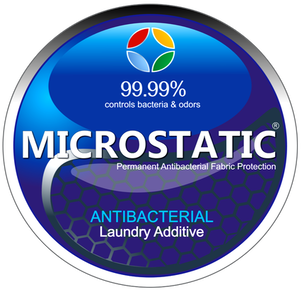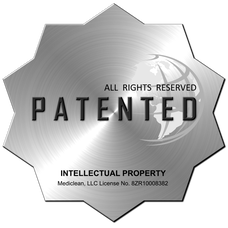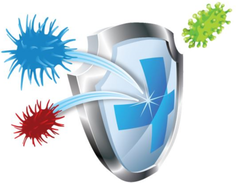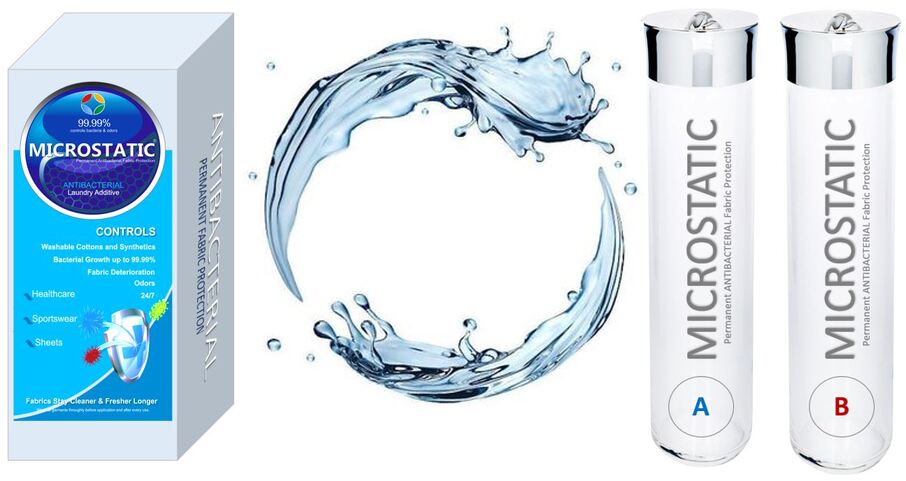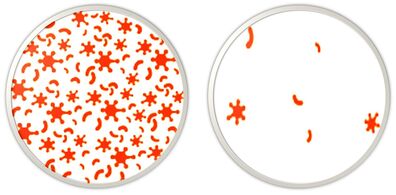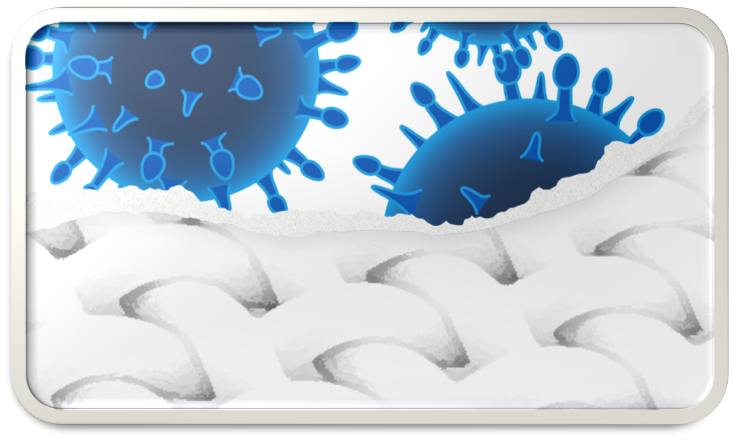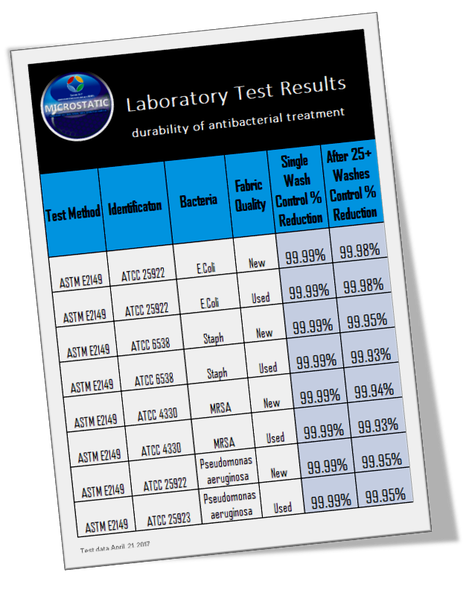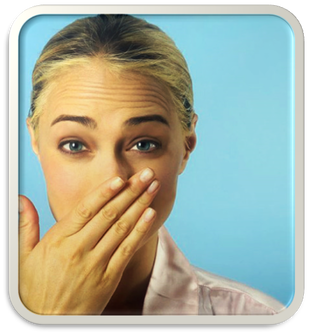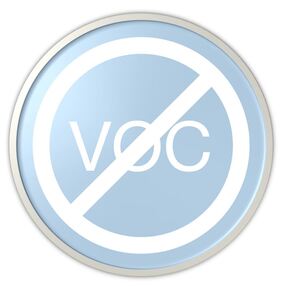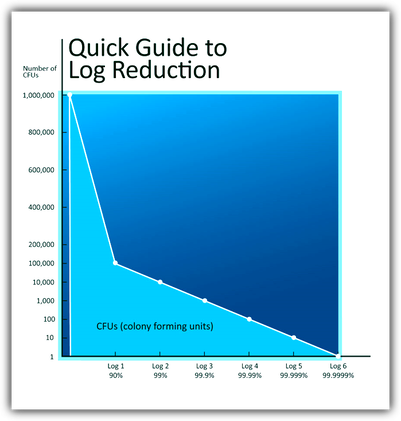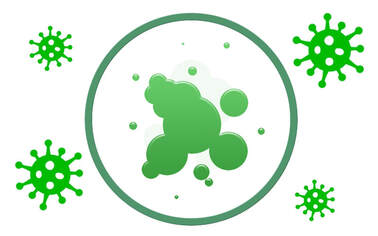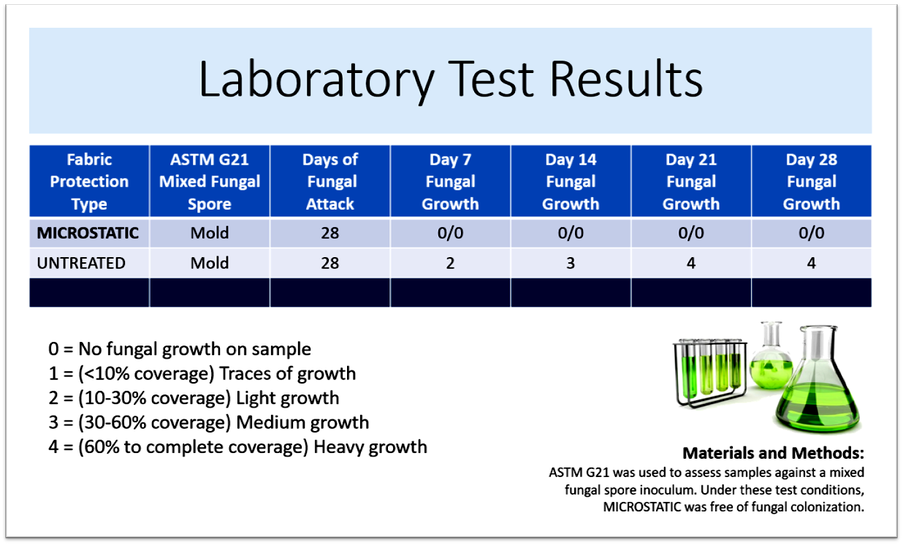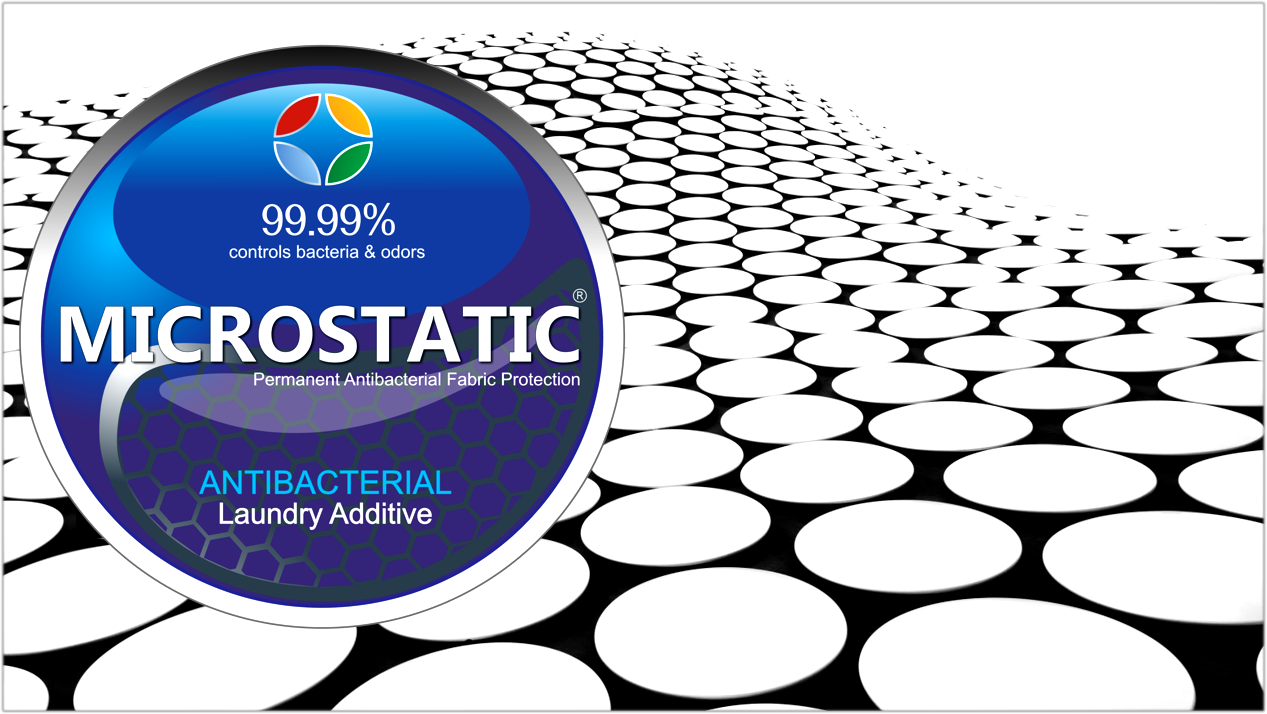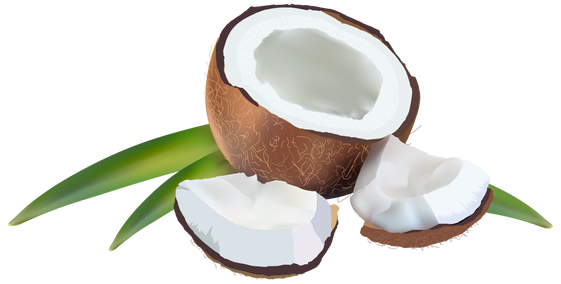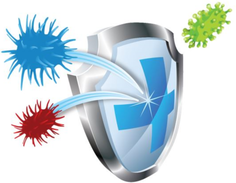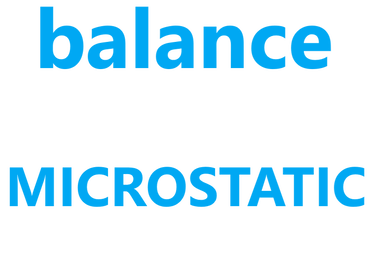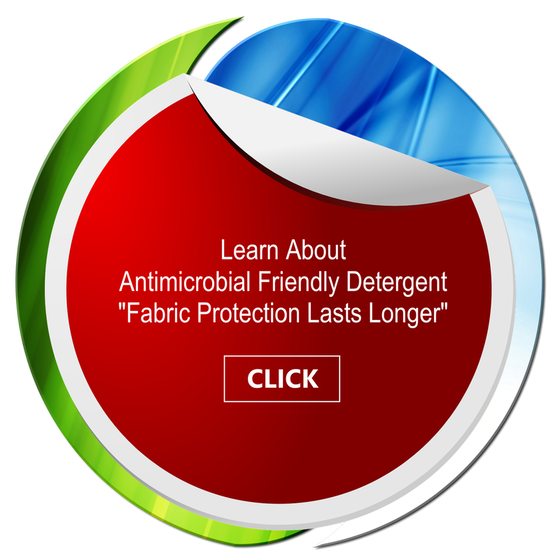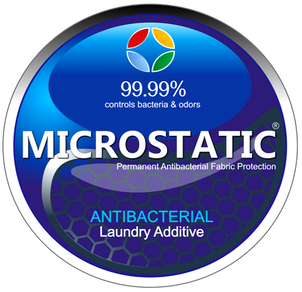FABRICS STAY CLEANER
& FRESHER LONGER
Controls Unwanted
|
Stops
|
Excellent Resistance
Against
Fungal Attack
Zero Growth
over 28 Days
High Level of Mold Control
Laboratory Tests
Independent Studies of Bacterial Reduction
and Fungal Control
ASTM G21 Fungal Defacement
Test Method
Determining Resistance of Synthetic Polymeric
Materials Against Fungal Attack
Conducted Weekly Resistance Testing for 28 days
Transforms any Aged Textile
with permanent fabric protection
Always Active
Protection
|
A coconut derived and renewable resource harnesses the power of natural antibacterial properties of coconuts. Giving us a breakthrough antibacterial laundry additive for processing permanent antibacterial fabric protection into any aged and washable fabric.
Independent laboratory data shows antibacterial properties from MICROSTATIC remain highly active to continuously control unwanted bacteria, fungal growth and derived odors after many washes. Once ordinary-unprotected fabrics are permanently transformed by MICROSTATIC. The always-active fabrics can now protect themselves against unwanted bacterial and other microbial attacks by as much as 99.99% |
Application
Easy as 1, 2, 3.
|
It's easy, just like laundry detergent, simply pour MICROSTATIC part A & B into your main washing compartment and then run as normal wash load. Make sure new and old fabrics are first washed prior to treatment. The highest level of fabric bonding occurs when production chemicals are first removed from new textiles and dirt/grime from older textiles.
Within 8 minutes, MICROSTATIC is activated by a unique cross-polymerization and covalent-bonding process. Infusing a permanent shield of fabric protection into any washable textile. Transformed fabrics are now self-defending with a new bio-static field of electrical^+charge and penetrating, RazorEdge>molecular-structure and synergistic cell*disrupting technologies for 24/7 bacteria & odor control. The always active source of MICROSTATIC doesn't cross the skin-barrier because it's mechanical, not chemical in nature. Unlike leaching, chemical/pesticide approaches, a mechanical mode of action doesn't create zones of inhibition which can deliver a less than lethal dose of chemical pesticides, potentially leading to the continued survival and creation of superbugs. The permanent protection of MICROSTATIC infused into fabrics during the washing process doesn't wash-off or wear-out. The permanent power of MICROSTATIC actively works to disrupt, electrocute and disable cellular activity 24/7 |
Our Philosophy
|
Cleanliness Really Counts!
Reducing bacteria counts while fabrics are in-service sets a new standard in fabric care. The top priority is reducing total bioburdens or bacterial counts between-washings to keep fabrics cleaner and fresher. Evolving to Hygienically Cleaner Textiles by self-defending against unwanted bacteria and odors while fabrics are actually in use, makes good sense. Permanent fabric protection offers a new level of cleanliness and extended fabric life. Defending fabrics 24/7 against unwanted bioburdens, biofilm buildup and premature deterioration and foul odors due to the unwanted multiplication of gram+/- bacteria, mold and fungi invaders. Although MICROSTATIC is unable to make health claims at this time. The future looks bright because hospital studies from around the globe indicate protected fabrics demonstrate a significant reduction of bioburden on patient sheets and pillow cases which equates to lower risks of hospital acquired infections by as much as 50%. Additionally, various studies indicate healthcare apparel is a potential vector for the transmission of disease from workers to patients. For now, the 24/7 active power of MICROSTATIC keeps fabrics cleaner, fresher, softer and lasting longer. Sensible for your own well-being, comfort and stellar environmental stewardship. FABRICS STAY
|
MICROSTATIC is extremely durable, safe and its mode of action is mechanical in nature.
Disclaimer: Wash all garments thoroughly after each every use. MICROSTATIC antimicrobial fabric protection does not protect wearers or others against bacteria, viruses or other disease organisms. Wash all fabrics after use. Non-public health products are used to control growth of microorganisms of economic and aesthetic significance and are not considered to be human health related.
EPA Classifies Antimicrobials into two types
Antimicrobial products are divided into two categories based on the type of microbial pest against which the product works:
Non-public health products (MICROSTATIC & DURABOND)
Are used to control growth of microorganisms of economic and aesthetic significance and are not considered to be human health related:
Nonpublic-health antimicrobial pesticide products are those products that bear a label claim to control microorganisms of economic or aesthetic significance, where the presence of the microorganism would not normally lead to infection or disease in humans. Examples of non-public health claims would include, but are not limited to, algaecides, slimicides, preservatives and products for which a pesticidal claim with respect to odor sources is made.
Disclaimer: Wash all garments thoroughly after each every use. MICROSTATIC antimicrobial fabric protection does not protect wearers or others against bacteria, viruses or other disease organisms. Wash all fabrics after use. Non-public health products are used to control growth of microorganisms of economic and aesthetic significance and are not considered to be human health related.
EPA Classifies Antimicrobials into two types
Antimicrobial products are divided into two categories based on the type of microbial pest against which the product works:
Non-public health products (MICROSTATIC & DURABOND)
Are used to control growth of microorganisms of economic and aesthetic significance and are not considered to be human health related:
- algae,
- odor-causing bacteria,
- bacteria which cause spoilage, deterioration or fouling of materials and microorganisms infectious only to animals. This general category includes products used in:
- cooling towers
- jet fuel
- paints
- treatments for textile and paper products.
- Sterilant: Used to eliminate or destroy:
- fungi,
- fungal spores,
- viruses,
- vegetative bacteria,
- bacterial spores.
Nonpublic-health antimicrobial pesticide products are those products that bear a label claim to control microorganisms of economic or aesthetic significance, where the presence of the microorganism would not normally lead to infection or disease in humans. Examples of non-public health claims would include, but are not limited to, algaecides, slimicides, preservatives and products for which a pesticidal claim with respect to odor sources is made.
|
Blue Plant
Partners |
Commercial Services
Domestic & International |
Processing License
Manufacturing Certification |
MICROSTATIC
PROMO CODE
2020 Cleaner Solutions, LLC All Rights Reserved I Terms & Conditions (Updated November 2020) I Accessibility I Privacy Policy (Updated November 2020) I Legal Statement

